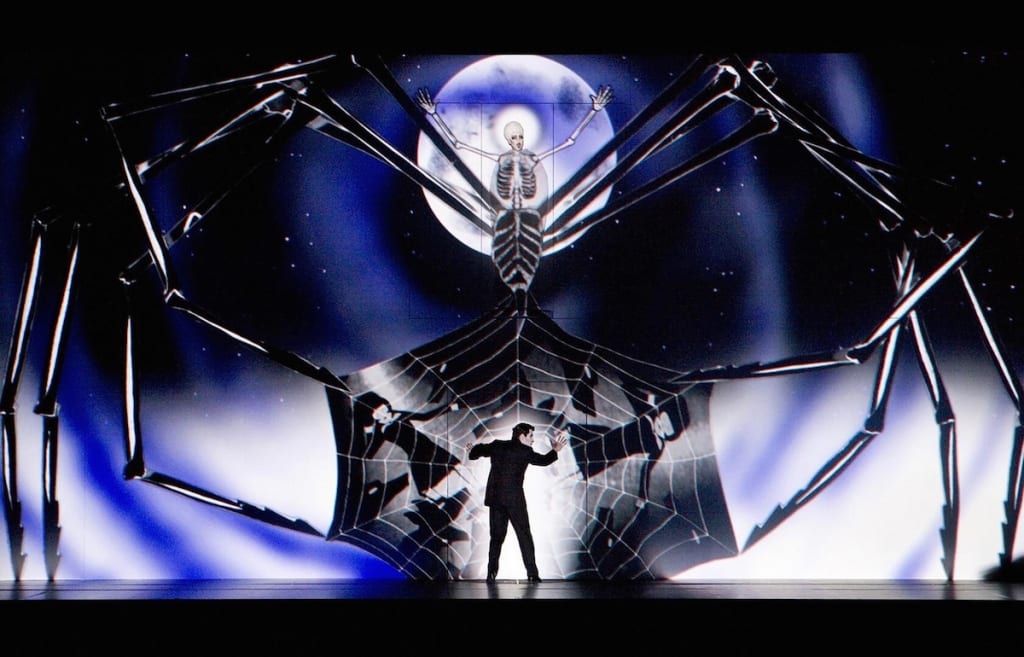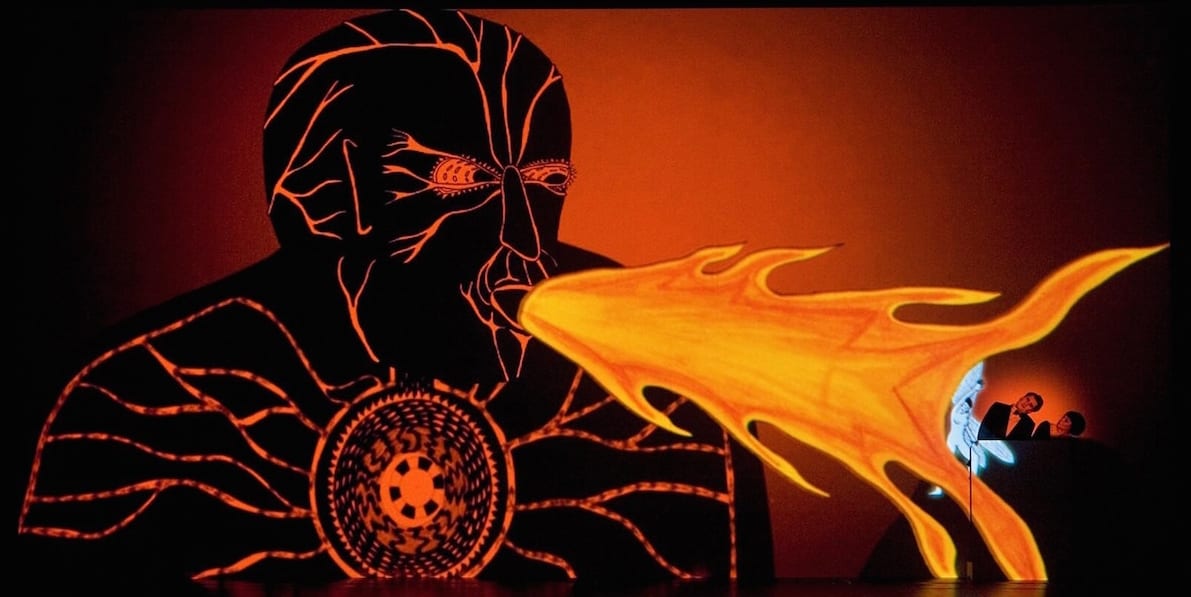This extraordinary production of The Magic Flute was first performed in Germany in 2012 and has since travelled around the world – but sadly never to London. So, for a London-based reviewer to see it in Berlin where it was premiered, feels like a special privilege. And it exceeded my already high expectations. The opera is one of Mozart’s finest achievements and this production is simply astounding. To create the piece, Barrie Kosky, the Australian intendant of the Komische Oper, worked with 1927, the British theatre company led by Suzanne Andrade, and came up with a silent film concept that grips the visual imagination just as the sublime music grips the aural imagination. It is a triumph in every way.
The Magic Flute is a fairy tale about Pamina, a damsel in distress, and Tamino, a heroic prince, who has to brave many ordeals to rescue her from the wicked sorcerer, Sarastro – except that, of course, Sarastro turns out not to be wicked, Pamina is not a helpless victim and Tamino is at first not at all heroic – he begins by fainting in terror while fleeing from a dragon. The quest of Prince Tamino is mirrored by the trials of his companion Papageno, the birdcatcher, an everyman figure who wants nothing more than a good meal and a girl to love. But behind the fairy tale sits an allegory about the search for wisdom and virtue and about the need to show both bravery and kindness in order to overcome superstition and evil. Mozart and his collaborator Schikaneder wrote the opera in 1791 not for the toffs of the imperial court but for the local folk at a theatre in the suburbs of Vienna and they created a popular masterpiece that, in the hands of Kosky and Andrade, seems both timely and timeless.
The opera is set in a visual world that is created by a cartoon animation into which the singers are embedded. They are usually stationary but, as the animation/scenery moves around them, they can seem to be running for their lives or descending into the underworld. Tamino’s flute is represented by a ‘Tinkerbell’ cartoon fairy who floats around the screen weaving magic. Monostatos is right out of Nosferastu and has a pack of vicious dogs to terrorise Pamina – they sometimes appear as cartoon figures and sometimes as chorus members in costume. Tamino looks like Rudolf Valentino and Papageno is Buster Keaton to the life. It is an inspired vision and it is carried through with hardly a moment of bathos. The opera is a singspiel and the production deals with the dialogue by adopting the conventions of silent film, with giant text captions appearing on the screen while a jangly piano plays the continuo music.

Zauberflote is loved by some as a sublime pantomime – others complain that the plot rambles and some of the music is trite. This reviewer belongs to the admirers. But whatever your view of the opera, you would have to have a heart of ice not to warm to this magnificent production. The Komische Oper is a centre of operatic excellence, of course – but it is also a welcoming and inclusive place. When I saw the opera, the audience was full of children, many clutching booster cushions, and the programme synopsis is in four languages including Turkish. This is a very special place and a very special production.

